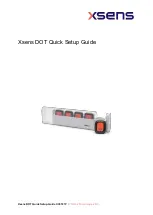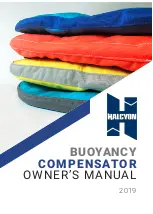
SAFETY, LIMITS OF RAIN GAGE LIABILITY, AND WARANTY
Only the rain sensor is covered-- absolutely no consequential damages
It is the responsibility of the systems integrator and
purchaser of the Rain Gage to insure a safe installation.
Any mechanical system, including one that incorporates a
Rain Gage, requires appropriate safety interlocks. Hydreon
Corporation (Hydreon) warrants only the actual cost of the
sensor, and only that it is free from defects in workmanship.
The Rain Gage is warranted to be free from defects for a
period of one year from date of purchase. Under no
circumstances will Hydreon be liable for any consequential
damages due to failure or any other mishap involving a Rain
Gage. Hydreon's liability in the event of a failure, or inability
to sense a condition, is limited to the actual cost of the
particular sensor. Explicitly, if other objects are destroyed due
to water damage, or if any object is destroyed because of a
false indication of water, Hydreon is in no way whatsoever
liable for anything other than the cost of the Rain Gage, and
then only if the Rain Gage is shown to have some defect in
materials or workmanship. Limitations and imperfections of
the Rain Gage do not constitute a defect. Further, if some
valuable data is not gathered because an erroneous
indication of any sort due to the Rain Gage, Hydreon is liable
only for the cost of the Rain Gage.
It is the responsibility of the system designer and purchasers
of the Rain Gage to insure that a failure of the Rain Gage
will not cause consequential damages. If a failure in Rain
Gage would cause disaster, we recommend against
deployment of the Rain Gage, or against the system in
which the Rain Gage is deployed. If a failure of a Rain
Gage would cause great expense, Hydreon recommends
redundant Rain Gages, and even in that case do not
assume any liability for consequential damages. It is the
responsibility of the system designer and purchasers of the
Rain Gage to be aware of performance limitations of the
device. If a Rain Gage fails for any reason Hydreon will
not be responsible for the labor of servicing and/or
installing and/or removing the Rain Gage. Labor is NOT
COVERED. Hydreon recommends that the system
designer perform a Failure-Mode Effects Analysis that
includes the possibility of Rain Gage failure. If a potential
purchaser of the Rain Gage does not agree with these
terms, we ask that the potential purchaser not buy the
Rain Gage. Deployment of the Rain Gage implies
understanding and agreeing to these limits of liability.
Apply engineering judgment: Hydreon does not claim the
RG-11 is a perfect rain sensor. It is what it is, and senses
what it senses.
CASE and COSMETIC POLICY
Some amount of yellowing or discoloration of the case is
considered normal cosmetic aging of the device, and
sensors so affect will not be replaced under warranty. Tiny
cracks or crazing within the lens is also considered
cosmetic, and units so affected will be replaced only if they
are deemed by Hydreon corporation to be considered to
be of a functional nature.
TROUBLESHOOTING
NOT WATERING ENOUGH
If the the RG-11 is inhibiting the watering cycle too much, meaning the soil is too dry before the irrigation system activates,
change the DIP switch setting appropriately. Water more-- DIP switch 1 ON-- and Water a lot more-- DIP Switch 2 ON.
WATERING TOO MUCH
If the soil is too wet when the irrigation system activates, you can change the DIP switch settings to Water Less-- DIP
switch 3 ON-- and Water a lot less-- DIP switches 3 and 1 ON. These settings will lower the inhibit and enable threshold.
DIP SWITCH SETTINGS
For all irrigation modes, DIP switch 7 must be on. Note that the table above contains 7 DIP switch settings, but the RG-11
has 8 DIP switches. DIP switch 8 is for Micro-power sleep mode which is completely disabled in irrigation mode. Also note
the position of each numbered switch as compared to the switch setting table. For example, in the DIP switch settings
table above, switch 7 is located on the left hand side of the table. Comparing that to the actual DIP switched on the RG-11
board, DIP switch 7 is located on the right side. Be sure the number in the table corresponds to the actual number on the
RG-11 board.
NO SIGNAL
Check that the LED is on when the output should switch between NO and NC. If the LED does not light, check the power
to the RG-11. Test by pouring water over the sensor. If the LED turns on, check to make sure that the output is wired
proplerly. A common mistake is switching NO and NC or not using the COM and just wiring to the NO and NC.
INHIBIT DURING STORM
By default, the RG-11 is set to the inhibit the irrigation system during a storm. This will occur even if not enough water has
accumulated. The reasoning is that if it is raining hard now, it is most likely that enough water will accumulate, and we do
not want to waste water. The "inhibit during storm" feature may be defeated by turning on DIP switch 4.























